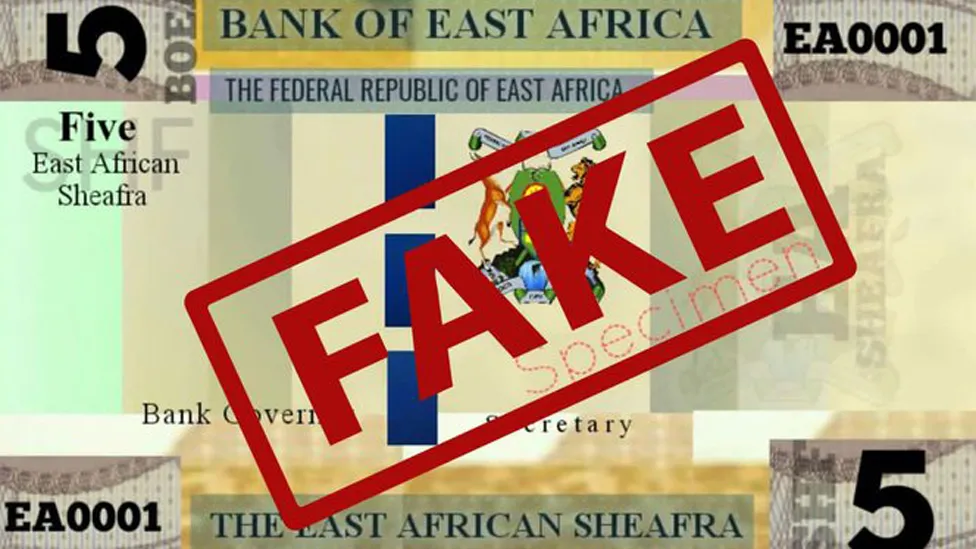The anticipation of a new single currency for East Africa appeared to materialize with the emergence of an account on X labeled “Government of East Africa,” complete with a verified grey tick. This account shared an image of a specimen note worth five sheafras, a currency coined by combining “shilling” and “franc.”
The news quickly gained traction, sparking debates about the currency’s name and design. However, the East African Community (EAC) clarified that the reports were false. The man behind the fake currency, Moses Haabwa, expressed surprise at its spread, aiming to offer hope to the region. Haabwa, who leads a non-existent entity called the “Federal Republic of East Africa Government,” has been releasing currency examples on social media.
While his project gained attention, the EAC emphasized that the journey to a single currency is ongoing, with a revised target of 2031. Haabwa defended his actions, citing a desire for East African unity and urging the EAC to expedite the process.

Regional Bloc and Bank of Tanzania Dismiss Rumors of New Banknotes
However, both the regional bloc and the Bank of Tanzania have dismissed the sheafra, urging people to disregard rumors circulating on social media about the introduction of new banknotes for the region.
“The EAC Secretariat wishes to inform all our stakeholders that the Partner States’ journey to a single currency is still a work in progress,” the EAC posted on X.
In 2013, EAC member countries aimed to achieve a single currency by this year.
However, the bloc has postponed the target date to 2031.
The eight members – Burundi, the Democratic Republic of Congo, Kenya, Rwanda, South Sudan, Somalia, Tanzania, and Uganda – exhibit significant differences in terms of culture, economies, physical size, and politics.
While a single currency could facilitate cheaper and easier cross-border trade, thus stimulating economic growth, concerns persist that it may not equally benefit all countries. Some worry that Kenya, the region’s most developed economy, could potentially exert disproportionate influence.













